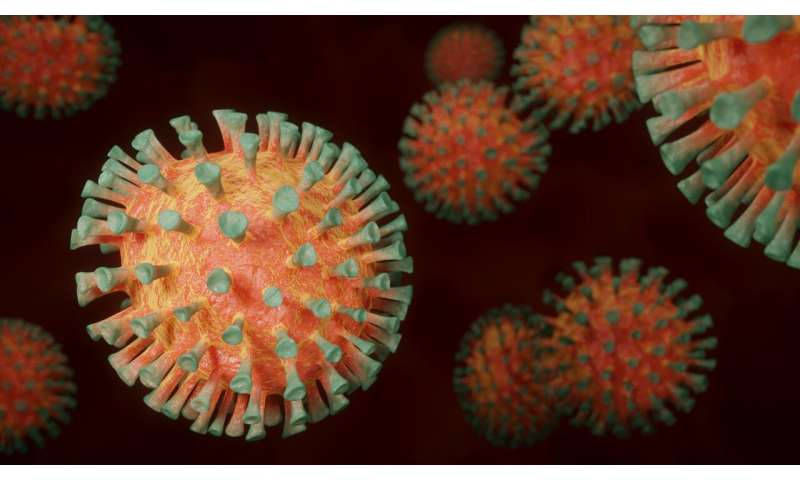

As the United States surpassed 200,000 coronavirus deaths recently, many are asking one simple question: When will it end?
Politicians and public health experts have touted herd immunity as one way to stop COVID-19 without a vaccine. The scientific concept explains that a virus will die out after a high percentage of a population is infected and survives the disease, developing immunity. Vaccines speed this process much more safely, but experts think we will be well into 2021 before most Americans can get immunized.
Most epidemiologists believe that if 50% to 70% of the population becomes immune to the coronavirus either through vaccination or illness, the pandemic would end. That’s because when most people are immune to a particular disease, the vulnerable are less likely to encounter a carrier of that illness.
But could herd immunity be a realistic way to stop the spread of the virus before vaccines are available?
We spoke with Henry Fraimow, an infectious-disease specialist at Cooper University Health Care in Camden, and Michael LeVasseur, a professor in epidemiology at Drexel Dornsife School of Public Health, to find out.
Fraimow: Herd immunity is the concept that lots of people in a population cannot get infected with a particular infectious agent because they have either had that infection before and have antibodies or immunity that prevents them from being infected, or they’ve been vaccinated against that infection. For infections to occur in a community, you have to have people who are susceptible to getting sick. When a proportion of people who can’t get sick anymore gets high, it’s harder for transmission to occur.
Fraimow: How we achieve it varies depending on what the infection is. For some infections, where virtually everyone gets infected, it’s harder and harder for a virus to spread. For example, we know certain viruses carried by mosquitoes, like Zika, swept through countries and infected high numbers of population. Those people then became immune, and it became harder and harder for mosquitoes to find people to infect. The other way to achieve herd immunity is by vaccinating everybody. If you vaccinate a high percentage of the population, then there aren’t enough people who are susceptible for the infection to spread. In some cases, herd immunity is achieved by a combination of both those things.
LeVasseur: The fewer people you come into contact with, the less likely it is that you will be infected. And if there’s a fewer number of people who are susceptible to the disease, the less likely it is that you’ll run into someone who can infect you, even if you are not vaccinated.
LeVasseur: In theory it can. It depends on the pathogen. With COVID-19, there are so many things we still don’t know. One thing we’ve seen is that when people are infected, their antibody response only lasts for three to four months. That’s on track with what we’ve seen with other coronaviruses. The second issue is that we have confirmed reports of people being reinfected with COVID-19. The idea of exposing 70% of the population at the same time to get herd immunity is such a failing of public health. The number of people who are going to die is staggering. It’s like throwing the baby out with the bathwater, setting it on fire and running it over with a truck.
Fraimow: A lot of these numbers come from what we call the reproductive number of a virus, which represents how many people an infected person spreads the virus to when nobody is immune. For COVID-19, that number varies from 2 1/2 to three. Those numbers are affected by how people are social distancing and other things. In order to achieve herd immunity, we have to have enough people immune so that if the average person walks into lots of people, so many of them are immune that the infected person is going to transmit the virus to less than one other person. That’s how the number of people infected continues to decrease.
LeVasseur: It’s like when you’ve got a building that’s on fire, and it’s going to take a lot of water to put it out. So instead you say, ‘Let’s let it burn and burn down the next building and the next building.’ You don’t want to do that with an infectious disease. It’s not ethical. It’s not cost-saving. There’s nothing about the approach that makes any sense.
Fraimow: There are several reasons why that’s not a great strategy. Even though the risk of serious disease in younger individuals is lower than in older individuals or the immunocompromised, there are still people in that group who get severely ill and die. We’re not great at separating out people who aren’t at risk from people who are at risk. For example, if a lot of disease is spreading among college students, most of whom who will be fine with the virus, we have to consider that they all have families and contacts. Some of those people will get infected, and they may then infect other people who are at risk. Another problem is that we don’t fully understand what the duration of immunity is. All those things create some concerns about how this concept of herd immunity works.
Source: Read Full Article